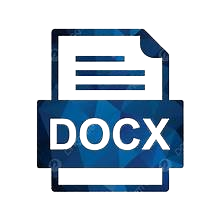ANALISIS YURIDIS REKAMAN CLOSED CIRCUIT TELEVISION (CCTV) SEBAGAI ALAT BUKTI TINDAK PIDANA PENCURIAN DALAM KEADAAN YANG MEMBERATKAN (Studi Putusan Nomor 5/Pid.B/2022/PN.Mdn)
DOI:
https://doi.org/10.35447/jph.v4i2.920Keywords:
CCTV footage, evidence, theftAbstract
Evidence in the examination process before trial has an important position in determining whether or not a defendant can be sentenced to a crime. Evidence in criminal procedural law is guided by Articles 183 and 184 of the Criminal Procedure Code. Evidence in pretrial investigations plays an important role in deciding whether or not a defendant can be punished for committing a crime. Provisions for proving criminal procedural law are regulated in Articles 183 and 184 of the Criminal Procedure Code.Thesis writing uses a normative juridical approach and is descriptive in nature and analyzed qualitatively. As time goes by, there is very rapid development of technology and information and is also supported by advances in science, giving birth to new regulations, namely Law Number 19 of 2016 concerning Information and Electronic Transactions, which regulates electronic activities, including electronic evidence. The conclusion of the discussion is that the legal position of CCTV recordings as evidence in the crime of theft with aggravation in Decision Number 5/Pid.B/2022/PN.Mdn is that CCTV footage is used as one of the supporting evidence provided by the Prosecutor's Office to reveal the crime of theft with aggravation . The position of CCTV in the judge's consideration is included in the category of evidence that provides clues and sheds light on a criminal act committed by the defendant
Downloads
References
Anggraeni, Nita, “Rekaman Video CCTV (Close Circuit Television) dalam Pembuktian Acara Pidana” Jurnal Ilmu Hukum, Vol.1 No.1 (2016).
Ali, Mahrus, 2016, Dasar-Dasar Hukum Pidana, Sinar Grafika, Jakarta.
Asmar, Lanka dan Samsul Fadli. 2019. Metode Penemuan Hukum: Pembuktian Elektronik dan CCTV Pada Peradilan Pidana. UII Press, Yogyakarta.
Chazawi, Adami, 2017, Pelajaran Hukum Pidana bagian I, Raja Grafindo Persada, Jakarta.
Fakhriah, Efa Laila, 2019, Bukti Elektronik dalam Pembuktian Perdata, Alumni, Bandung
Hamdan, M. 2015, Alasan Penghapus Pidana Teori dan Studi Kasus, Refika Aditama, Bandung.
Hamzah, Andi, 2015. Hukum Acara Pidana Indonesia, Sinar Grafika, Jakarta.
Harahap, M. Yahya, 2014, Pembahasan Permasalahan dan Penerapan KUHAP Penyidikan dan Penuntutan, Sinar Grafika, Jakarta.
Kuffal, HMA. 2018. Penerapan KUHAP Dalam Praktik, Umm Press, Malang.
Makarao, Mohammad Taufik dan Suhasril, 2016, Hukum Acara Pidana Dalam Teori Dan Praktek, Ghalia Indonesia, Jakarta.
Muhammad, Rusli, 2016, Potret Lembaga Pengadilan Indonesia, Raja Grafindo Persada, Jakarta.
Mulyadi, Lilik, 2017, Hukum Acara Pidana Normatif, Teoretis, Praktik, Dan Permasalahannya, Alumni, Bandung.
Mulyawan, Budy, “Kekuatan Alat Bukti Informasi Elektronik Dalam Penyidikan Tindak Pidana Keimigrasian (The Power of Electronic Information as Evidence in The Investigation of Immigration-Related Crimes)”, Jurnal Ilmiah Kebijakan Hukum. Vol. 12 No. 1. (2018)
Prodjodikoro, R. Wirjono, 2012, Tindak-tindak Pidana Tertentu Di Indonesia, Refika Aditama, Bandung.
Putriyanto, Tariska, “Kendala Penggunaan CCTV Oleh Penyidik Dalam Mengungkap Tindak Pidana Penganiayaan”, Jurnal Of Comprehensive Science, Vol. 2 No. 4 April 2023.
Rumiyanto, Bukti Elektronik Sebagai Alat Bukti Yang Sah Dalam Hukum Acara Pidana (Electronic Evidence As An Admissible Evidence In Criminal Law). Jurnal Hukum dan Peradilan. Vol. 6. No. 3. (2017).
Sabuan, Ansori, 2014, Hukum Acara Pidana, Angkasa, Bandung.
Simanjuntak, Nikolas, 2019, Acara Pidana Indonesia dalam Sirkus Hukum, Ghalia, Jakarta
Sitompul, Josua, 2012, Cyberspace, Cybercrimes, Cyberlaw; Tinjauan Aspek Hukum Pidana. Tatanusa, Jakarta.
Soepomo, R. 2012. Hukum Acara Pidana Pengadilan Negeri, Pradnya Paramita, Jakarta.
Downloads
Published
How to Cite
Issue
Section
License
Authors who publish with this journal agree to the following terms:
- Authors retain copyright and grant the journal right of first publication with the work simultaneously licensed under Creative Commons Attribution 4.0 International License that allows others to share the work with an acknowledgment of the work's authorship and initial publication in this journal.
- Authors are able to enter into separate, additional contractual arrangements for the non-exclusive distribution of the journal's published version of the work (e.g., post it to an institutional repository or publish it in a book), with an acknowledgment of its initial publication in this journal.
- Authors are permitted and encouraged to post their work online (e.g., in institutional repositories or on their website) prior to and during the submission process, as it can lead to productive exchanges, as well as earlier and greater citation of published work (Refer to The Effect of Open Access).









